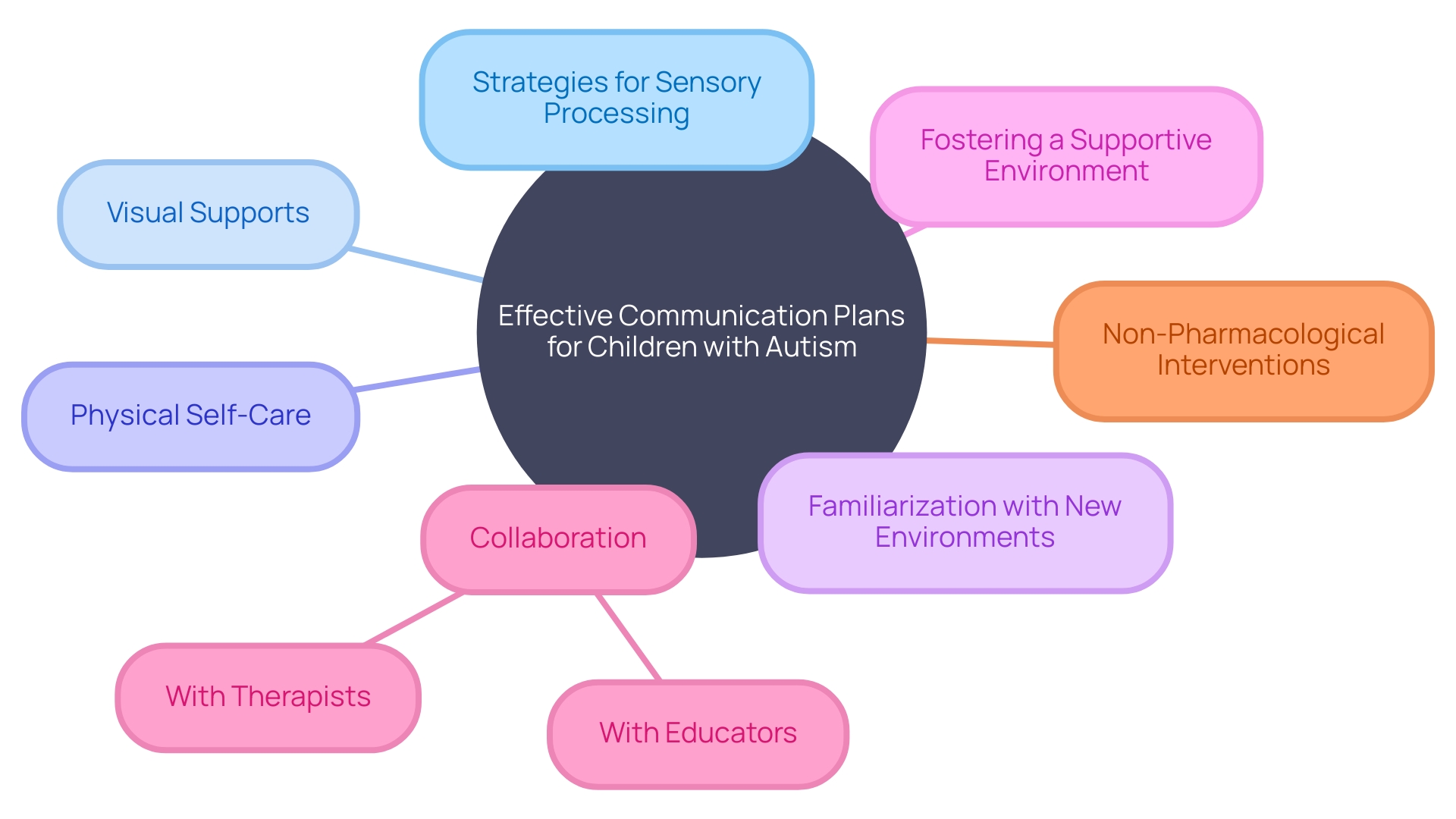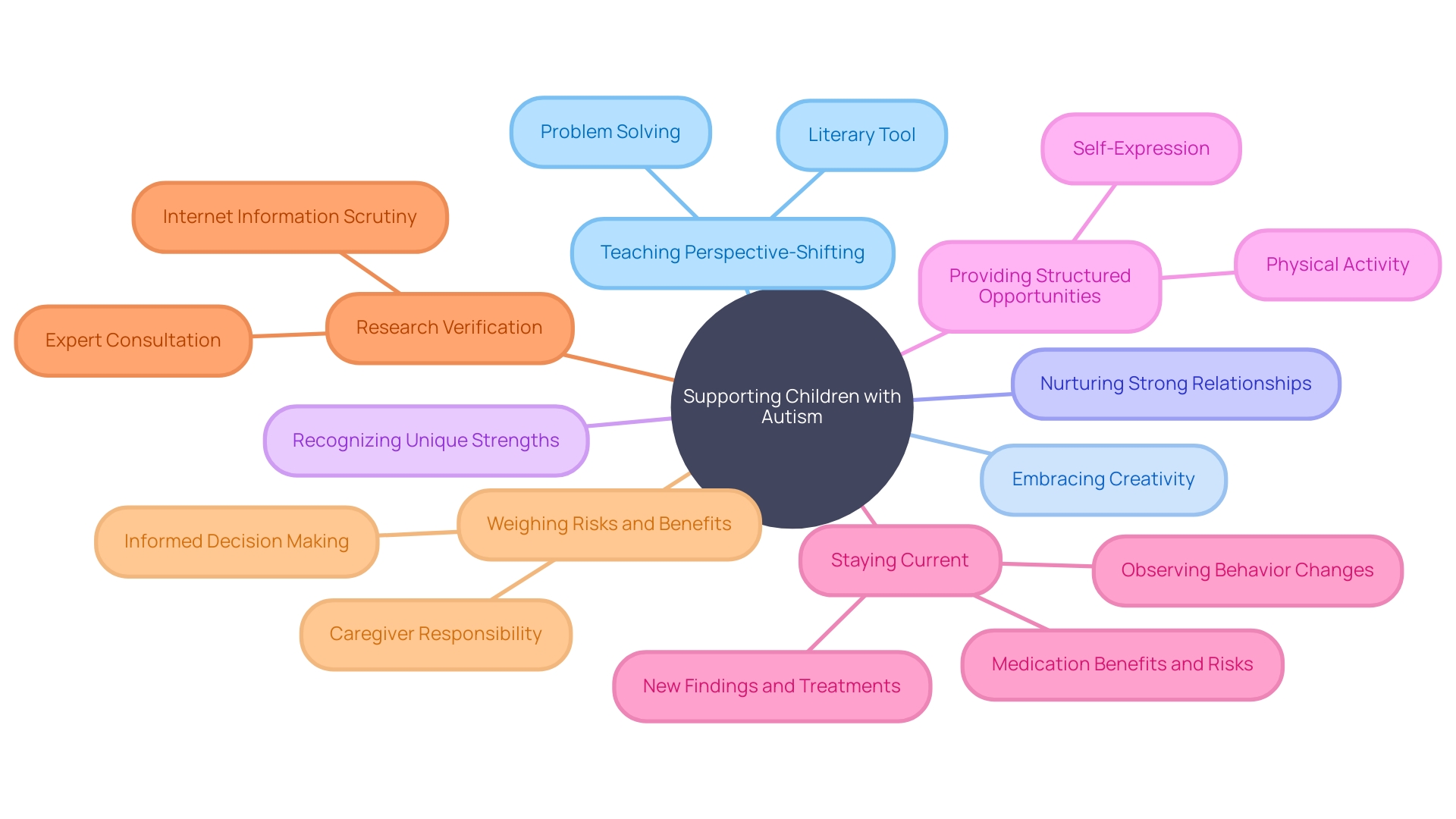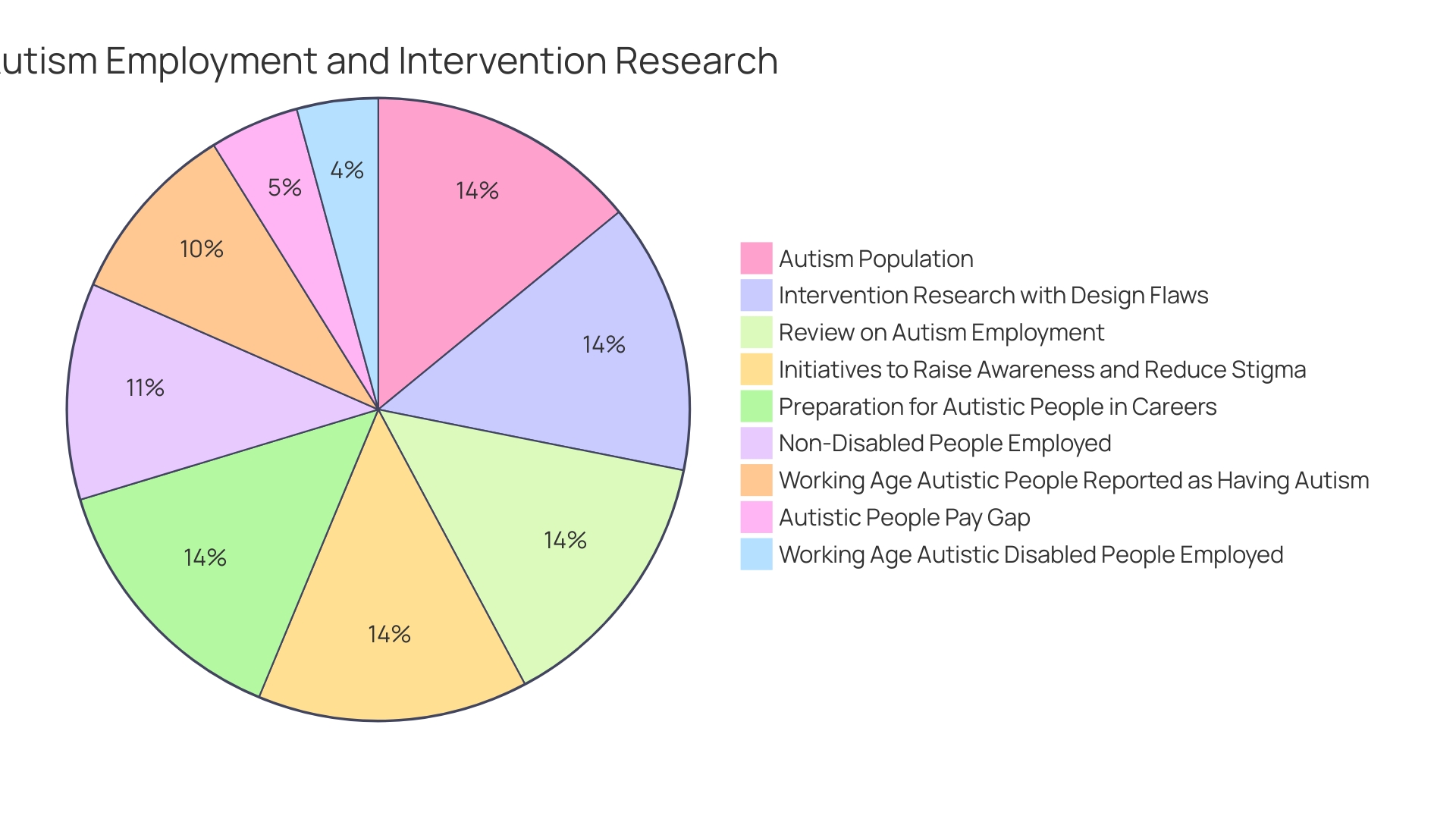Introduction
Children with autism spectrum disorder (ASD) often face unique challenges when it comes to sensory processing. Understanding and recognizing signs of overstimulation is crucial for parents and caregivers to provide the necessary support. From agitation and irritability to withdrawal and restlessness, these symptoms indicate when a child's brain is receiving more sensory input than it can handle.
With the prevalence of sensory processing issues in individuals with ASD, it is important to implement strategies that create a supportive environment tailored to their sensory needs. Designing sensory-friendly spaces, incorporating sensory breaks and strategies, developing effective communication plans, seeking professional support, encouraging self-regulation techniques, building resilience and coping skills, and tailoring strategies to individual needs are all essential for ensuring the well-being of children with autism. By advocating for sensory accommodations and fostering a personalized approach, parents can contribute to a more inclusive society that recognizes and respects the unique sensory experiences of all individuals.
Recognizing Signs of Overstimulation
Children with autism spectrum disorder (ASD) experience the world differently, and sensory processing is a unique challenge for many. Recognizing when your child is facing sensory overload is crucial. Symptoms can manifest as agitation or irritability, as well as withdrawal or restlessness.
These responses occur when the brain receives more sensory input than it can process, akin to a computer trying to run too many programs at once. With 1 in 45 adults in the U.S. diagnosed with ASD, understanding these sensory difficulties is more important than ever. A qualitative thematic analysis of 58 publications has identified the prevalence of sensory processing issues in individuals with ASD, emphasizing the necessity for supportive strategies.
For instance, an overstimulated auditory system can turn a public space into an overwhelming cacophony, hindering an individual's ability to function. Grasping the signs of overstimulation enables parents to step in with calming techniques, creating a supportive environment tailored to their child's sensory needs.
Creating a Sensory-Friendly Environment
Designing spaces that cater to sensory sensitivities is paramount for enhancing the daily experiences of children with autism. This means moving beyond mere aesthetics to consider the sensory impact of an environment. For example, the Autism ASPECTSS Design Index highlights acoustics and spatial sequencing as two key factors.
Tailored modifications, like using LED lights that don't flicker as recommended by Dr. Temple Grandin, can significantly improve comfort. Additionally, individualized solutions like augmented reality applications that transform tactile sensations into visual or auditory stimuli can address specific sensory challenges, such as those experienced during dental visits. By thoughtfully designing spaces with these considerations in mind, we can create supportive environments that accommodate the unique needs of individuals with sensory processing sensitivities, thus fostering their engagement and well-being in various settings.
Implementing Sensory Breaks and Strategies
Children on the autism spectrum often have unique sensory processing needs, which can manifest as either hypersensitivity (over-responsiveness) or hyposensitivity (under-responsiveness) to sensory input. Sensory breaks are a vital part of supporting these children, allowing them to manage sensory input and avoid overstimulation, which is crucial for their well-being.
Sensory activities that engage the five senses—touch, smell, sight, taste, and sound—along with the vestibular and proprioceptive systems, can be incredibly beneficial. They have the potential to significantly enhance language skills, fine and gross motor skills, social skills, and self-regulation abilities. For example, activities providing deep pressure, such as the use of weighted blankets or engaging in gentle rocking, are known to promote relaxation and self-regulation.
Moreover, calming sensory activities like listening to soft music or practicing deep breathing exercises can be included in these breaks. These strategies are not just fun but are calming and centering for many children with autism. Regularly incorporating such tailored sensory breaks throughout the day can help in maintaining a balanced sensory experience, which is essential for their participation in everyday life.
As Dr. Temple Grandin, a renowned advocate for the autism community, emphasized, it's important to create environments that accommodate sensory sensitivities. This could mean ensuring that lights do not flicker, as flickering can be a significant distraction for those with autism. Adapting to the individual sensory needs of children with autism not only supports their mental health but is also a step towards equity, enabling them to engage peacefully and effectively in various life domains such as school and leisure activities.
By acknowledging the unique sensory experiences of children with autism and implementing strategies to manage them, caregivers can foster an environment that supports the healthy development and well-being of these children. This approach aligns with the fundamental principles of mental health and equity, as highlighted by the late Dr. David (Dan) R. Offord, who advocated for inclusive support for children with disabilities to ensure they are not left behind in the 'race' of life.
Developing a Communication Plan
For children with autism, navigating sensory-rich environments can be overwhelming, leading to overstimulation. To support these children, creating an effective communication plan is crucial. This plan should incorporate strategies tailored to the child's unique sensory processing needs.
Visual supports, such as schedules and social stories, can clarify expectations and routines, while visual cues can guide them through their day with less stress.
When considering physical self-care, it's essential to recognize that neglecting basic needs can exacerbate the challenges associated with autism. A well-structured communication plan can also address these needs by incorporating reminders for personal care into daily routines, thereby avoiding added stress from unmet essential needs.
The experiences of individuals like Humza, an 11-year-old with autism, highlight the importance of familiarization with new environments. His preparation for a flight through practice and research exemplifies how proactive strategies can reduce anxiety related to new experiences. Similarly, a communication plan can help children with autism feel more comfortable in various settings by providing a sense of predictability and control.
By understanding the unique processing style associated with autism, parents and caregivers can foster a supportive environment. It's not just about managing overstimulation but also about embracing a child's way of engaging with the world. Collaborating with educators and therapists ensures that all those involved in the child's care are aligned, leading to a consistent and nurturing approach across different environments.
Research underscores the need for interventions without negative side effects, which aligns with the emphasis on non-pharmacological strategies in communication plans. By focusing on strengths and respecting the individuality of each child with autism, these plans can make a significant difference in their ability to thrive.

Seeking Professional Support
Navigating the sensory overload that children with autism experience requires careful planning and the support of skilled professionals. Occupational therapists and behavior analysts play a crucial role in this process, as they bring a wealth of experience in identifying specific sensory triggers and crafting intervention plans that are personalized to each child's unique sensory profile. These experts can offer strategies to parents and caregivers that are not only effective but also empower them to understand and manage their child's sensory needs.
By working closely with these professionals, parents can ensure that their children receive the consistent support they need to cope with overstimulation, thereby enhancing their ability to thrive in various environments.
For autistic individuals, particularly as they reach adulthood, navigating psychological and societal challenges becomes increasingly complex. It's essential to recognize their specific needs and common strengths, rather than relying solely on specialist referrals, which may not always be accessible. With a little additional training, caregivers and practitioners can learn to effectively support autistic individuals, fostering trust and understanding that can make a significant difference in their lives.
Statistics highlight the urgent need for tailored support, with 8 out of 10 autistic individuals reporting mental health issues. These challenges are not confined to the individual; they ripple through families, schools, and healthcare systems. It's imperative that society shifts towards better understanding and actively meeting the needs of autistic people.
By doing so, we can work towards a future where autistic individuals are not only supported but can also lead happy and healthy lives.
Encouraging Self-Regulation Techniques
Equipping children with autism to handle sensory overstimulation is a critical skill for navigating a world rich in stimuli. Sensory processing challenges are inherent in autism, manifesting as hypersensitivity or hyposensitivity to various inputs like sights, sounds, and touch. These sensitivities are not just preferences; they can cause significant discomfort and stress for those affected.
Self-regulation techniques can significantly empower children, giving them the autonomy to manage their sensory experiences. Practices such as deep breathing, engaging in mindfulness, and employing sensory grounding methods can provide relief from overstimulation. By recognizing the early signs of sensory overload, children can utilize these strategies to maintain their calm and composure.
Moreover, the incorporation of technology such as Augmented Reality (AR) in learning has shown promise in aiding individuals with autism. AR's ability to blend real and virtual worlds offers a controlled environment to practice self-regulation skills, enhancing learning and confidence.
It's essential to adopt an integrative and holistic approach when teaching these techniques. This framework not only focuses on managing emotions and behaviors but also emphasizes the importance of connecting with the environment and developing healthy relationships. It's a pathway for children to express themselves spiritually and communicate their needs effectively, fostering a sense of empowerment as they grow into adulthood.
The latest research in autism interventions, particularly those emphasizing social interaction and learning, highlights the enjoyment and benefits autistic individuals gain from these experiences. This underscores the immense value of learning self-regulation skills in social settings, allowing for the application of these techniques in real-world interactions.
Parents can play a pivotal role by encouraging their children to engage with these self-regulation strategies. By doing so, they support their children's journey towards independence and resilience in the face of sensory challenges.
Building Resilience and Coping Skills
To support children with autism in navigating sensory overstimulation, it is essential to foster resilience and coping mechanisms. One effective strategy is teaching perspective-shifting, which encourages children to consider different viewpoints to enhance problem-solving skills. This approach was evidenced in a study involving third to fifth graders, where those who engaged in perspective-shifting displayed improved problem-solving abilities.
Embracing creativity also plays a pivotal role, enabling children to devise alternative solutions when facing challenges. Moreover, nurturing strong relationships can provide children with a sense of security and the ability to withstand adversity. These relationships are a buffer against stress, as identified by Dr. David (Dan) R. Offord, who emphasized the importance of equitable participation for children with disabilities in various life domains.
It is also crucial to recognize the unique strengths that children with autism bring to their communities, as well as their unmet needs. By providing children with structured opportunities for self-expression and physical activity in a secure environment, parents can significantly contribute to their child's development of adaptive coping strategies and emotional regulation. This holistic support is vital for children's mental health and for fostering an inclusive society that acknowledges the diverse capabilities of every child.

Tailoring Strategies to Individual Needs
Personalization is the key when it comes to supporting a child with autism's sensory needs. Since sensitivity varies widely among children with ASD, a strategy that might soothe one child could very well be a trigger for another. Recognizing and respecting each child's unique sensory profile is essential.
For instance, sensory issues can manifest through over-responsiveness or under-responsiveness to stimuli such as light and sound, which can significantly impact daily activities. As exemplified in a recent AR application designed for dental visits for autistic patients, adapting environments to match individual sensory preferences can be revolutionary. This application translates tactile sensations into visual and auditory cues, catering to the community's strengths.
The importance of such tailored strategies is supported by studies and expert opinions. A child psychiatrist, Dr. David (Dan) R. Offord, emphasized the need for equitable support for children, particularly those with disabilities, to engage meaningfully in all life domains. This aligns with the holistic approach required for managing sensory processing issues in autism.
By carefully observing the child's reactions and preferences in various settings, caregivers can devise individualized strategies to reduce overstimulation, thereby fostering a nurturing environment for their child's growth and well-being.
Moreover, recent research underscores the importance of addressing sensory hypersensitivities, particularly auditory, which can profoundly affect an individual's quality of life. Effective management of these sensitivities is not only about creating immediate comfort but also about enabling autistic individuals to participate fully in their communities, thereby reducing the risk of exclusion and mental health challenges.
Additionally, routine adaptation, as suggested by autism advocates, can help prepare children for unexpected changes, which is especially beneficial during periods like the holiday season when routines are disrupted. By practicing flexibility within a structured routine, children can learn to navigate and cope with change more effectively, reducing potential stress and emotional outbursts.
In the spirit of making the societal 'race' fair for all, it is crucial that caregivers have access to the necessary resources to support their children. Initiatives like the Kevin and Avonte Program demonstrate the impact of dedicated support, providing grants to enhance public awareness, education, and the development of systems that address critical issues such as elopement. The commitment of $10.3 million to this program since 2018 highlights the societal recognition of the importance of addressing the unique challenges faced by the autism community.
In conclusion, embracing a personalized approach to sensory processing issues in children with autism is fundamental. By doing so, caregivers not only cater to their child's specific needs but also contribute to a fair and supportive society that recognizes the unique contributions and potential of every individual.
Advocating for Sensory Accommodations
Creating sensory-friendly environments is essential for children with autism, who may experience a mix of hypersensitivity and hyposensitivity to stimuli such as light, sound, and touch. This can often result in overstimulation, making typical environments challenging for them. Parents are key advocates for their children's sensory needs, actively engaging with educators and professionals to modify environments to be more inclusive.
For instance, noise-canceling headphones can help minimize auditory overload, while alternative seating arrangements and visual supports can enhance learning experiences. Such accommodations are not just beneficial; they're integral for the success and overall well-being of children with autism, enabling them to engage more fully with the world around them.
In recent news, Philadelphia became the first sensory-inclusive city in the United States, a testament to the growing awareness of sensory needs. Similarly, the introduction of an American Sign Language interpreted version of the 'Barbie' movie showcases a shift towards inclusive experiences in entertainment. These developments underscore the importance of understanding and accommodating sensory issues, as they can significantly impact individuals with autism and other sensory processing challenges.
As the prevalence of disabilities continues to rise, with the 2022 Canadian Survey on Disability revealing that 27% of Canadians over 15 have disabilities impacting their daily activities, the push for sensory-friendly accommodations becomes even more critical. By advocating for these changes, parents can help shape a more inclusive society that recognizes and respects the sensory experiences of all individuals.

Conclusion
Children with autism spectrum disorder (ASD) face unique challenges in sensory processing. Recognizing signs of overstimulation is crucial for parents and caregivers to provide support. Designing sensory-friendly spaces and incorporating individualized solutions are essential.
Implementing sensory breaks and strategies, developing effective communication plans, seeking professional support, and encouraging self-regulation techniques are vital. Building resilience and coping skills, tailoring strategies to individual needs, and advocating for sensory accommodations contribute to a more inclusive society. By embracing a personalized approach, parents empower their children and foster their overall well-being.




